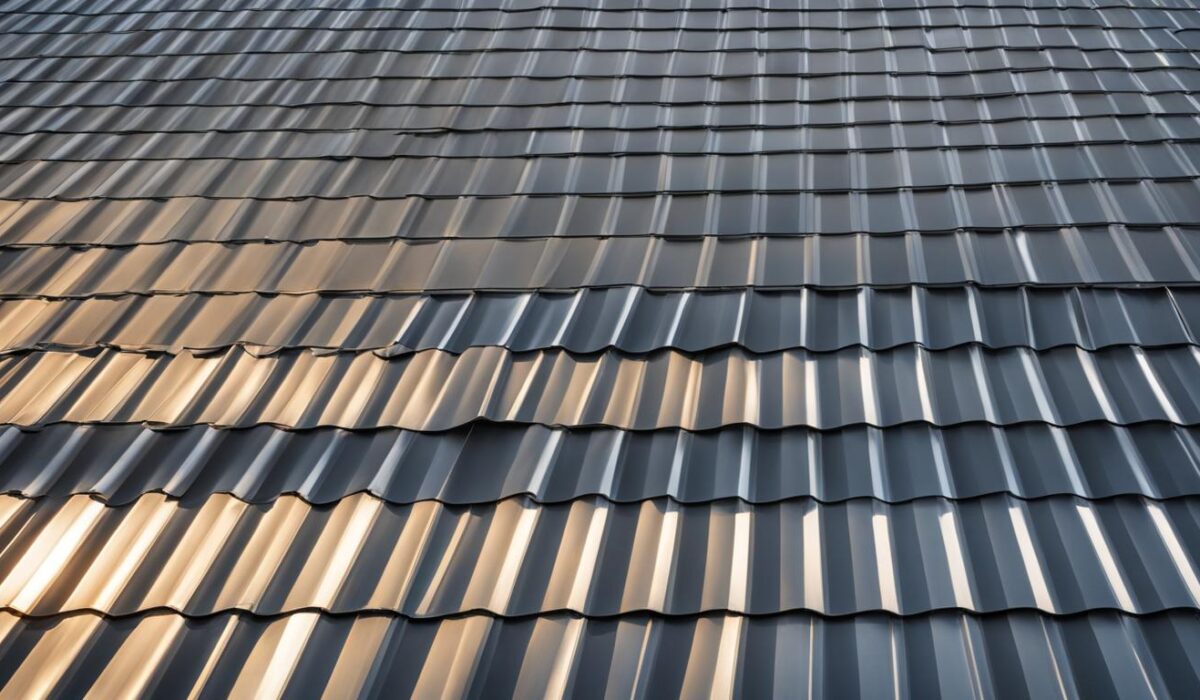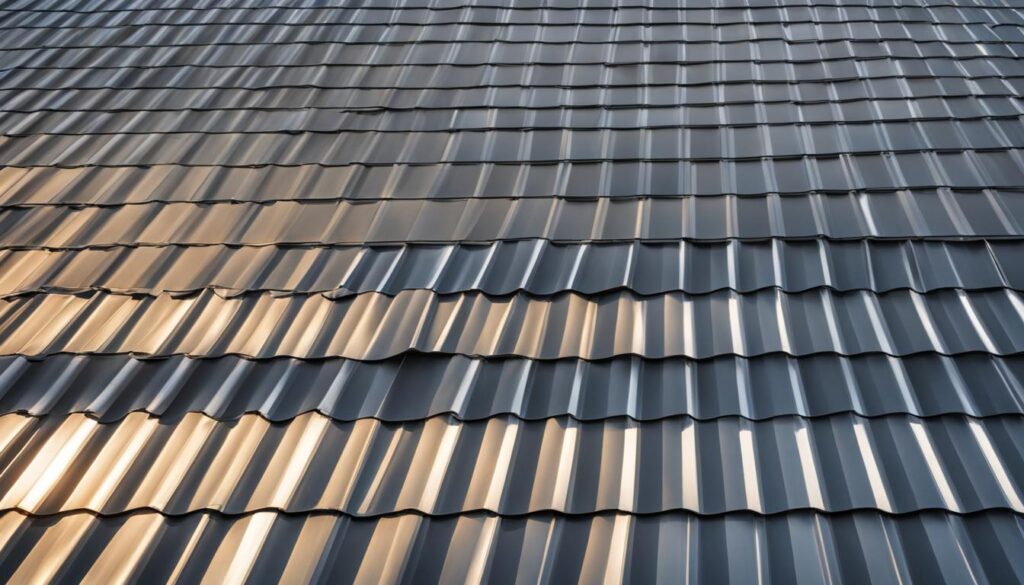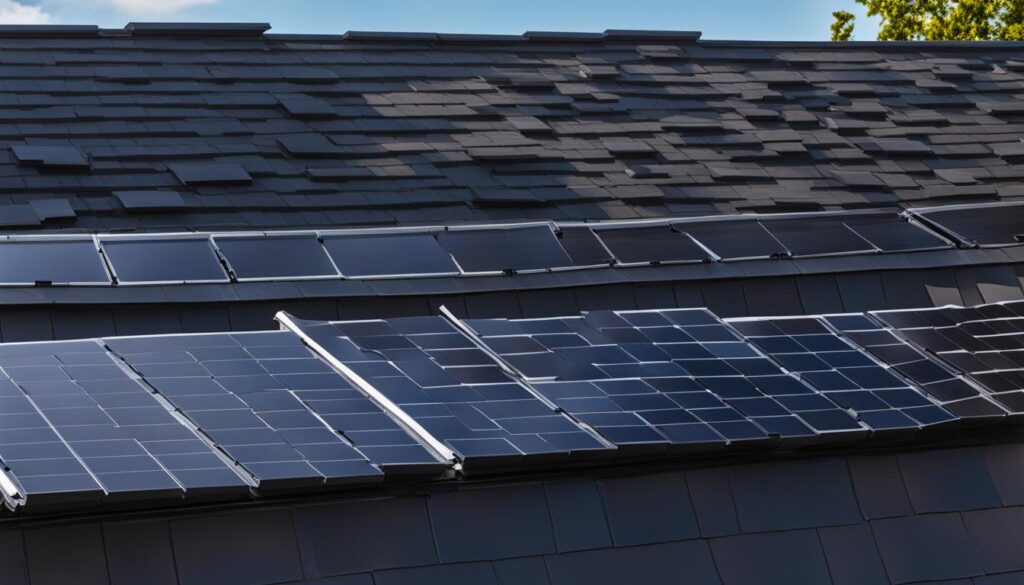Roofing Material Trends are reshaping the landscape of home construction in the United Kingdom, as homeowners increasingly gravitate towards environmentally friendly and sustainable roofing choices. The industry is witnessing a surge in innovative solutions like green roofs, solar panels, and cool roofing technologies that not only conserve energy but also offer substantial environmental advantages. The popularity of metal roofing is soaring due to its robustness, longevity, and sleek design, making it a sought-after option for those seeking both functionality and aesthetic appeal. In urban residential settings, flat roofs are emerging as a contemporary, versatile choice, aligning with modern architectural trends. The advent of technology in this sector has led to the creation of smart roofing systems and solar roofing tiles, revolutionizing how energy efficiency is integrated into roofing designs. As color preferences evolve and the emphasis on energy-saving features grows, homeowners find themselves with an ever-expanding array of choices for their roofing upgrades.
Key Takeaways
- Roofing trends in the United Kingdom include eco-friendly and sustainable options
- Metal roofing provides durability, strength, and a stylish appearance
- Flat roofs offer a modern and customizable option for residential properties
- Technological advancements have led to smart roofing systems and solar roofing tiles
- Color trends are changing, with a focus on bold and vibrant colors
Eco-Friendly Roofing Options
Eco-friendly roofing materials are becoming increasingly popular as homeowners strive to reduce their carbon footprint and create sustainable homes. These options not only contribute to a greener environment but also offer numerous benefits in terms of energy efficiency, durability, and low maintenance requirements.
One of the most sought-after eco-friendly roofing options is the installation of green roofs, also known as living roofs. These roofs are covered with vegetation and soil, providing insulation, reducing energy consumption, and improving air quality. Green roofs also have the added benefit of reducing stormwater runoff and extending the lifespan of the underlying roof structure.
Solar panels are another popular choice for homeowners looking to go green. By harnessing the power of the sun, solar panels generate clean and renewable energy, reducing reliance on traditional energy sources. This not only helps to reduce electricity bills but also contributes to a sustainable future by reducing greenhouse gas emissions.
Benefits of Eco-Friendly Roofing Options:
“Choosing eco-friendly roofing options not only supports environmental sustainability but also provides homeowners with long-term cost savings and numerous benefits. Green roofs and solar panels offer insulation, energy efficiency, and reduced reliance on traditional energy sources. These options contribute to cleaner air, reduced stormwater runoff, and a greener future.”
Table: Comparison of Eco-Friendly Roofing Options
| Roofing Option | Benefits |
|---|---|
| Green Roofs | Insulation, energy efficiency, improved air quality, reduced stormwater runoff |
| Solar Panels | Renewable energy generation, reduced reliance on traditional energy sources, cost savings |
| Recycled Materials | Durability, low maintenance requirements, energy efficiency |
Furthermore, using sustainable roofing materials, such as recycled rubber, plastic, bamboo, and cork, is gaining traction in the industry. These materials are not only durable but also require minimal maintenance. They offer energy efficiency and can be a cost-effective alternative to traditional roofing materials. Incorporating these eco-friendly options into residential roofing not only benefits homeowners but also contributes to a greener and more sustainable future for all.
Metal Roofing
Metal roofing has emerged as a popular choice for homeowners seeking durable and stylish roofing options. With its exceptional strength and longevity, metal roofs offer long-term protection and require minimal maintenance, making them a cost-effective investment for any property.
One of the key advantages of metal roofing is its ability to withstand extreme weather conditions. Whether it’s heavy rain, strong winds, or even hailstorms, metal roofs offer superior resistance, providing homeowners with peace of mind and protecting their homes from potential damage.
Additionally, metal roofing offers a wide range of design options to suit various architectural styles. From sleek and modern profiles to classic and traditional appearances, homeowners can choose from a diverse selection of colors, finishes, and textures. Metal roofs can even mimic the look of other materials such as wood, clay, or slate, allowing homeowners to achieve the desired aesthetic without compromising on durability.
| Advantages of Metal Roofing | Disadvantages of Metal Roofing |
|---|---|
| Long lifespan | Higher initial cost compared to some other roofing materials |
| Excellent durability | Can be noisy during heavy rain or hailstorms |
| Superior resistance to weather conditions | May dent or scratch if walked upon or hit by large objects |
| Wide range of design options | May require professional installation |
It’s important to note that while metal roofing offers numerous benefits, it may not be suitable for every property or budget. Factors such as location, budget, and personal preferences should be considered when evaluating the feasibility of metal roofing for a specific project.
Flat Roofing
Flat roofing is a modern and versatile option for homeowners seeking a contemporary design for their homes. Unlike traditional sloped roofs, flat roofs offer a unique aesthetic appeal and can be customized to suit individual preferences. Whether you prefer a rooftop garden, a terrace, or even a swimming pool, a flat roof provides the perfect opportunity to create additional outdoor space.
One of the advantages of flat roofing is its ease of maintenance. Unlike sloped roofs, which require regular inspections and repairs, flat roofs are accessible and easier to navigate. This accessibility allows for quick and efficient maintenance, saving homeowners time and money in the long run.
Furthermore, the design possibilities with flat roofing are endless. The clean lines and minimalistic appearance of a flat roof complement modern architectural styles. Whether you opt for a monochromatic color scheme or bold, contrasting hues, a flat roof can enhance the overall aesthetic of your home.
| Advantages of Flat Roofing | Disadvantages of Flat Roofing |
|---|---|
| Customizable outdoor space | Potential for water pooling |
| Easy maintenance and repairs | Requires proper insulation for energy efficiency |
| Modern and minimalist design | More susceptible to leaks if not properly installed |
Overall, flat roofing offers a contemporary and customizable option for homeowners who want to make a statement with their roof design. With proper maintenance and insulation, flat roofs can provide many years of reliable performance and enhance the overall aesthetics of your home.
Roofing Technology
Advances in technology have revolutionized the roofing industry, introducing innovative solutions that enhance energy efficiency, durability, and functionality. Smart roofing systems and solar roofing tiles are two prominent examples that showcase the integration of technology into modern roof designs.
Smart roofing systems utilize sensors and automation to regulate temperature, detect leaks in real-time, and monitor energy consumption. These systems provide homeowners with greater control and visibility over their roof’s performance, allowing them to optimize energy usage and identify potential issues before they escalate. By harnessing the power of smart technology, homeowners can ensure the longevity and efficient operation of their roofs.
Smart roofing systems provide homeowners with greater control and visibility over their roof’s performance.
Solar roofing tiles are another technological advancement that combines the functionality of a traditional roof with the capability to generate clean and renewable energy. These tiles are designed to seamlessly integrate into the overall roof structure, providing a visually appealing and sustainable power source. By harnessing solar energy, homeowners can reduce their reliance on traditional energy sources, lower utility costs, and contribute to a greener future.
| Advantages of Roofing Technology | Benefits |
|---|---|
| Smart Roofing Systems |
|
| Solar Roofing Tiles |
|
Conclusion
In conclusion, the roofing industry is continuously evolving to keep up with the changing needs of homeowners and builders. With a focus on sustainability and eco-friendliness, roofing trends are shifting towards materials and designs that minimize the impact on the environment. Green roofs, solar panels, and cool roofs are gaining popularity due to their energy-saving benefits and ability to improve air quality.
Metal roofing has become a go-to choice for homeowners who want durability and a stylish appearance. With a wide range of colors and finishes, metal roofs are not only functional but also aesthetically pleasing. Flat roofs, once limited to commercial buildings, are now embraced in residential properties, offering modern and customizable options. They also provide additional outdoor space for relaxation and recreation.
Technological advancements in the roofing industry have introduced smart roofing systems and solar roofing tiles. These innovations improve energy efficiency, enhance durability, and offer additional functionality. By embracing these modern roof designs and utilizing sustainable materials like recycled rubber, plastic, bamboo, and cork, homeowners can create a unique and personalized roofing solution that adds value to their property while reducing their environmental impact.
As homeowners and builders continue to prioritize energy efficiency and sustainability, the roofing industry will continue to innovate and adapt. By staying on top of the latest roofing trends and incorporating modern roof designs and sustainable materials, individuals can create not only a functional and stylish home but also contribute to a greener future.
FAQ
What are some eco-friendly roofing options?
Some eco-friendly roofing options include green roofs, solar panels, and cool roofs. Green roofs are covered with vegetation and soil, providing insulation and improving air quality. Solar panels generate clean and renewable energy, reducing reliance on traditional energy sources. Cool roofs, made from reflective materials, reduce heat absorption and energy consumption during hot weather.
Why is metal roofing popular?
Metal roofing is popular due to its durability, strength, and stylish appearance. It comes in a wide range of colors and finishes and can mimic the appearance of other materials like wood, clay, and slate. Metal roofs can withstand extreme weather conditions, making them a popular choice in areas prone to natural disasters. They are also energy-efficient and require minimal maintenance.
What are the advantages of flat roofing?
Flat roofs offer a modern and customizable option for residential properties. They provide a minimalist appearance and can be customized to suit individual preferences. Flat roofs also offer additional outdoor space, such as roof gardens, terraces, and swimming pools. They are easier to maintain and repair compared to sloped roofs.
What is roofing technology?
Roofing technology refers to innovative advancements in the roofing industry. Smart roofing systems can regulate temperature, monitor energy consumption, and detect leaks in real-time. Solar roofing tiles are being developed, generating electricity while functioning as a traditional roof. These advancements improve energy efficiency, durability, and functionality of roofs.




